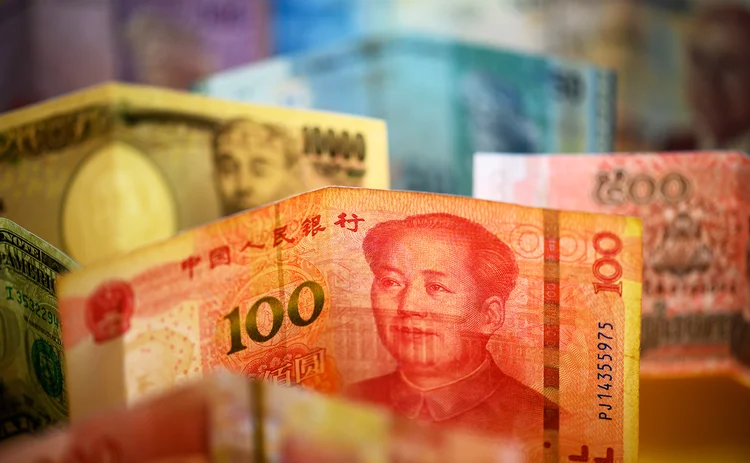
Asia’s central bankers bullish over cross-border payments
Policy-makers at Asia Summit also spoke of gradual pick-up in use of local currencies

Central bankers reflected on regional efforts to promote cross-border payments and the use of local currencies at last week’s Central Banking Asia Summit, highlighting some opportunities and challenges.
On July 24–25, more than three dozen attendees from 14 institutions took part in the event in Bangkok, organised by Central Banking and Bank of China (Hong Kong).
Interlinking regional payments systems
A central banker from the Gulf said cross-border payments within the region had become faster and more efficient since the launch in December 2021 of Afaq. The payments system allows central banks of Gulf Cooperation Council countries to process transactions between themselves in local currencies on a real-time basis.
“We can now settle transactions in the local currencies of GCC countries, in comparison with correspondent banking in the past, which is a lengthier process and does not work after working hours,” the banker said.
The official added that the broader goal of setting up Afaq had been to promote investment and trade between Gulf Arab states. The official’s own central bank is also exploring the possibility of connecting its real-time gross settlement system with a non-GCC country’s to facilitate trade and economic activity.
Meanwhile, the central banker said GCC countries are also looking into linking up their instant payments systems (IPSs). However, officials will still need to iron out regulatory differences between the GCC countries, such as discrepancies between their anti-money laundering screening requirements for cross-border transactions.
A central banker from the Caucasus expressed interest in Project Nexus. The project, led by several Association of Southeast Asian Nations (Asean) central banks and the Bank for International Settlements, aims to develop a platform connecting IPSs from different countries to enable faster and cheaper cross-border payments.
We can now settle transactions in the local currencies of GCC countries, in comparison with correspondent banking in the past, which is a lengthier process and does not work after working hours
Central banker from the Gulf
This central banker said existing payments links between Asean countries had shown how fintech development could directly benefit the real economy, such as the tourism sector.
The banker added that geopolitical developments had created new economic opportunities for countries along the Middle Corridor or Trans-Caspian International Transport Route. The banker said improving financial infrastructure in the area was therefore necessary for seizing those opportunities.
The Middle Corridor, which connects China and Europe, which has seen a rise in cargo transit volumes following Russia’s 2022 invasion of Ukraine. It is gaining popularity as an alternative to the more established Northen Corridor trade route, which passes through Russia.
Bilateral or multilateral links?
A central banker from an Asian institution said it generally took about one to two years for countries to set up bilateral links. This quick approach was suitable for specific use cases, such as enabling QR code payments between two countries, the banker said. It also gives policy-makers the flexibility to choose their partners based on the countries’ economic ties.
On the other hand, a multilateral payments link would offer greater scalability, potentially enabling more than 75 countries with IPSs to connect their systems, the official said.
This central banker added that a multilateral link would be more cost-effective in the long run because it could reduce service fees as more countries joined the system.
Use of local currencies
An official from an African central bank said it had been modernising the country’s domestic payments system in recent years. Its latest effort involves setting up an IPS, which it aims to launch by 2025, with the support of a third party.
The official said the institution was also exploring how it could scale up the use of local currencies by enabling cross-border payments with the future IPS. The official added that, given the country’s trade dynamics with a few individual countries, it would be in its own interest to explore a greater use of local currencies.
An Asian central banker said their institution had been exploring alternative financial infrastructure and reducing its reliance on traditional systems amid rising geopolitical tensions. These efforts included setting up cross-border payments links with other countries.

The central bank has also been promoting the use of local currencies for settling transactions with key trading partners, by easing regulatory barriers and foreign exchange regulations.
However, the banker said the use of regional currencies for cross-border transactions remained limited, while the costs of the transactions themselves remained high: “Financial connectivity in our region has yet to catch up with trade and investment connectivity.”
The official said that, although the use of local currencies had gradually increased over the years, businesses often do not immediately switch to using them. The transition depends on factors such as the nature of the business, awareness and cost. The official observed that a company with investment in a country would be more likely to encourage a subsidiary there to use local currency to settle intra-company payments.
Another central banker from Asia said the US dollar was still the dominant currency used for cross-border payments in their country, although the yuan was among the others being used: “It’s not only the exporters who prefer US dollars, but apparently even in China, the exporters from there also prefer to invoice products in US dollars.”
It’s not only the exporters who prefer US dollars, but apparently even in China, the exporters from there also prefer to invoice products in US dollars
Central banker from Asia
The banker said this was because Chinese exporters also needed to source other goods invoiced in dollars to produce the goods they exported.
The banker said that there had been a “very gradual” pick-up in the use of the yuan for trading purposes, but that the usage was still at a relatively low level. They added that Chinese tourists can also make QR code payments in yuan in the banker’s country and that this trend would become more popular in the future.
A central banker from an Arab country said promoting the use of local currencies had its benefits, such as reducing transaction costs, improving the efficiency of cross-border payments and supporting economic integration between countries. However, there were concerns that governments and central banks needed to address before entering into a local currency settlement agreement with another country.
The banker said authorities would need to consider how banks could manage their balances once they had set up the arrangements. Banks from a country that had a trade deficit with another would need to have sufficient reserves of currency from the latter country.
Only users who have a paid subscription or are part of a corporate subscription are able to print or copy content.
To access these options, along with all other subscription benefits, please contact info@centralbanking.com or view our subscription options here: http://subscriptions.centralbanking.com/subscribe
You are currently unable to print this content. Please contact info@centralbanking.com to find out more.
You are currently unable to copy this content. Please contact info@centralbanking.com to find out more.
Copyright Infopro Digital Limited. All rights reserved.
As outlined in our terms and conditions, https://www.infopro-digital.com/terms-and-conditions/subscriptions/ (point 2.4), printing is limited to a single copy.
If you would like to purchase additional rights please email info@centralbanking.com
Copyright Infopro Digital Limited. All rights reserved.
You may share this content using our article tools. As outlined in our terms and conditions, https://www.infopro-digital.com/terms-and-conditions/subscriptions/ (clause 2.4), an Authorised User may only make one copy of the materials for their own personal use. You must also comply with the restrictions in clause 2.5.
If you would like to purchase additional rights please email info@centralbanking.com







